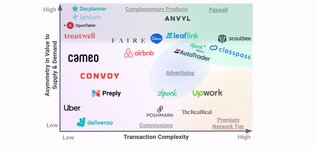Derived products are rarely seen in marketplaces because this data is better used internally to improve matching on commission-based marketplaces or lead generation in paywalled marketplaces. In rare cases, marketplaces targeting complex and opaque markets, like Leaflink, can provide aggregated and anonymized market data as a part of a paid tier.

